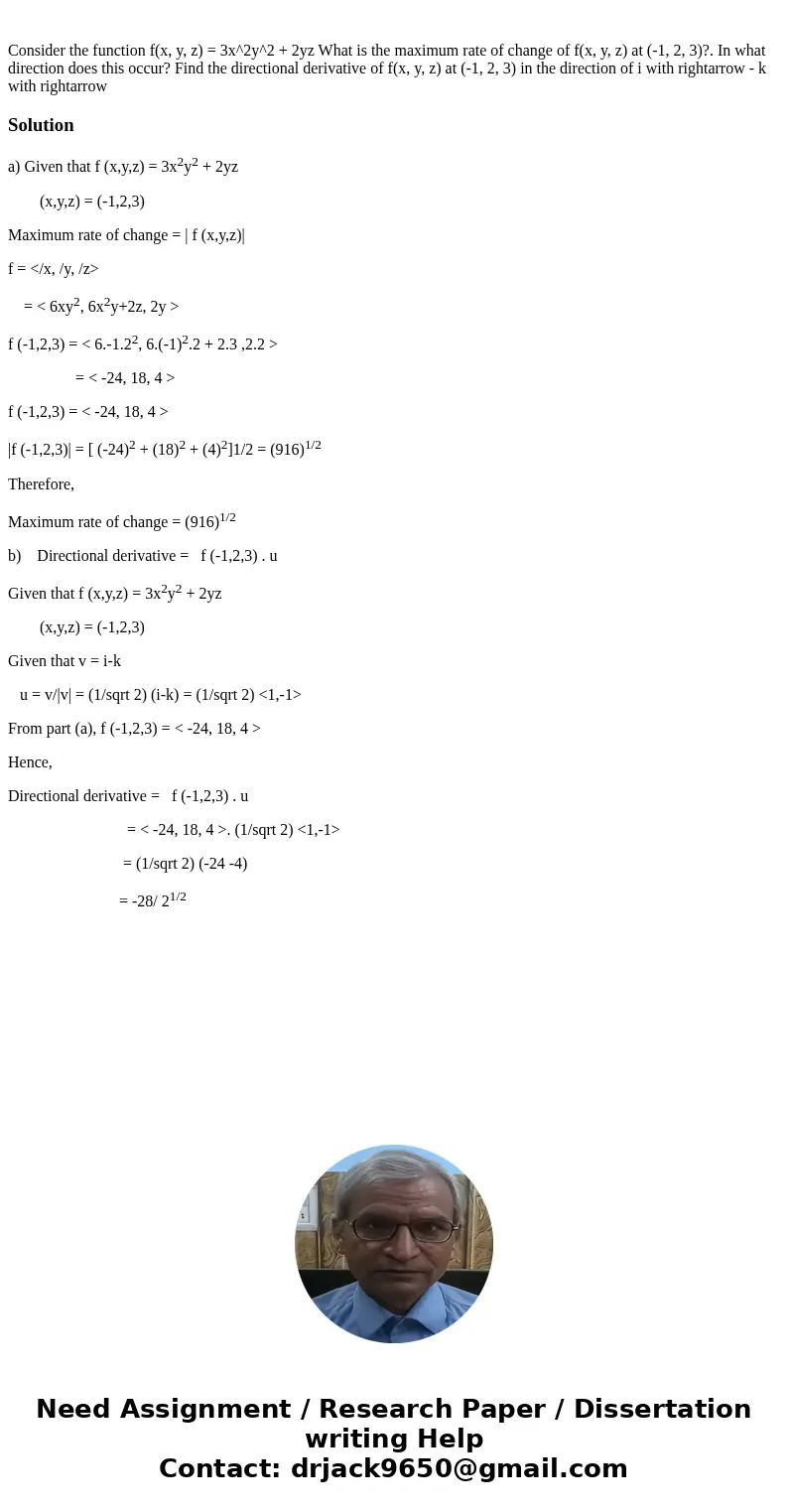Consider the function fx y z 3x2y2 2yz What is the maximum
Solution
a) Given that f (x,y,z) = 3x2y2 + 2yz
(x,y,z) = (-1,2,3)
Maximum rate of change = | f (x,y,z)|
f = </x, /y, /z>
= < 6xy2, 6x2y+2z, 2y >
f (-1,2,3) = < 6.-1.22, 6.(-1)2.2 + 2.3 ,2.2 >
= < -24, 18, 4 >
f (-1,2,3) = < -24, 18, 4 >
|f (-1,2,3)| = [ (-24)2 + (18)2 + (4)2]1/2 = (916)1/2
Therefore,
Maximum rate of change = (916)1/2
b) Directional derivative = f (-1,2,3) . u
Given that f (x,y,z) = 3x2y2 + 2yz
(x,y,z) = (-1,2,3)
Given that v = i-k
u = v/|v| = (1/sqrt 2) (i-k) = (1/sqrt 2) <1,-1>
From part (a), f (-1,2,3) = < -24, 18, 4 >
Hence,
Directional derivative = f (-1,2,3) . u
= < -24, 18, 4 >. (1/sqrt 2) <1,-1>
= (1/sqrt 2) (-24 -4)
= -28/ 21/2

 Homework Sourse
Homework Sourse